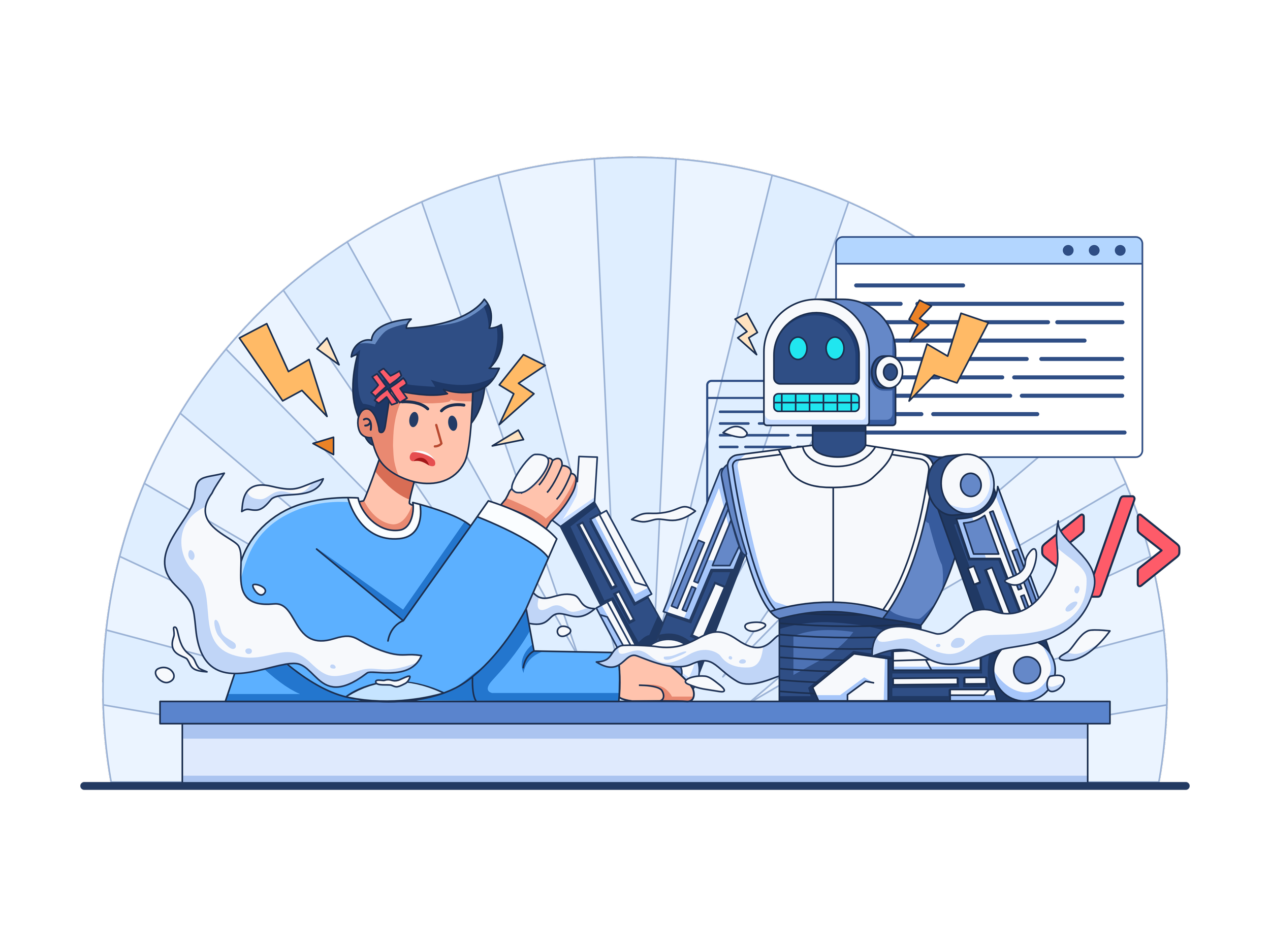Will AI Take Our Jobs as Designers—Or Enhance Them?
The AI Debate: Disruption or Evolution?
Every major technological advancement sparks the same question: Will this replace human jobs?
In design, AI tools are evolving rapidly, generating layouts, branding concepts, and even writing code. But despite the hype (and occasional fearmongering), AI isn’t here to replace designers—it’s here to enhance our work.
The reality? AI lacks the depth of creativity, critical thinking, and strategic problem-solving that human designers bring to the table.
Instead of seeing AI as a threat, designers should embrace it as a tool—one that helps with efficiency, eliminates mundane tasks, and even serves as a creative sparring partner.
Where AI Stands Today: What It Can and Can’t Do
AI-powered design tools like DALL·E, Midjourney, and Adobe Firefly are impressive, but they still operate within strict, pattern-based limitations.
✔ What AI Can Do:
Generate quick concept variations based on prompts.
Automate mundane tasks like resizing assets, color correction, and background removal.
Provide inspiration and ideas to jumpstart the creative process.
Speed up repetitive design tasks in UI/UX workflows.
✖ What AI Can’t Do:
Understand human emotion, nuance, and cultural context.
Make strategic design decisions that align with business goals.
Push boundaries and innovate beyond existing patterns.
Apply ethics and responsibility in design choices.
AI is great at suggesting ideas, but it lacks intent, meaning, and true creative vision—which is why designers remain irreplaceable.
The False Perceptions of AI in Design
There’s a lot of misunderstanding about what AI actually does in creative industries. The table below breaks down common misconceptions vs. the reality of AI in design.
| Common Misconception | The Reality | What Designers Should Do |
|---|---|---|
| AI will replace designers entirely. | AI generates assets but lacks strategic thinking and creativity. | Use AI for inspiration and efficiency, but always apply human expertise. |
| AI can create original, innovative designs. | AI remixes existing data—it doesn’t push creative boundaries. | Use AI as a starting point, then refine and elevate designs with human intent. |
| Clients will prefer AI-generated work because it's faster. | Clients value strategic thinking, brand storytelling, and custom solutions—things AI can't fully provide. | Position yourself as a designer who leverages AI while still delivering unique, high-value work. |
| AI eliminates the need for research and iteration. | AI lacks context and empathy—design still requires testing and refinement. | Use AI for rapid prototyping, but always validate with user research. |
How Designers Can Use AI to Their Advantage
Instead of fearing AI, designers should integrate it into their workflow to improve efficiency and creativity. Here’s how:
Automate Mundane Tasks
Designers waste countless hours on repetitive work like asset resizing, background removal, and simple layouts. AI can handle these quickly, freeing up time for higher-level creative thinking.
Get Off the Blank Canvas
AI can be an idea generator when designers feel stuck. Tools like DALL·E and Midjourney can create initial concepts, which designers can refine, customize, and elevate.
Improve Iteration Speed
Instead of manually tweaking multiple layout variations, AI can quickly generate different compositions, colors, or styles, allowing designers to explore more options faster.
Strengthen Research and Insights
AI-powered analytics tools help designers analyze user behavior, predict trends, and gain insights to inform smarter design decisions.
Maintain the Human Touch
AI is a great support tool, but it lacks:
Empathy
Cultural awareness
Emotional intelligence
Strategic problem-solving
The best designers leverage AI but always add human value—ensuring the final output is thoughtful, meaningful, and aligned with real-world needs.
AI as an Enhancement, Not a Replacement
Design won’t be fully automated—because design isn’t just about production, it’s about thinking, strategy, and human connection.
By embracing AI as a creative partner, designers can:
✔ Save time on tedious tasks.
✔ Explore new ideas and break creative blocks.
✔ Focus on high-impact work that AI can’t do.
AI is a tool, not a threat. The best designers won’t resist it—they’ll use it to their advantage while ensuring their work retains the human touch that AI can never replicate.
